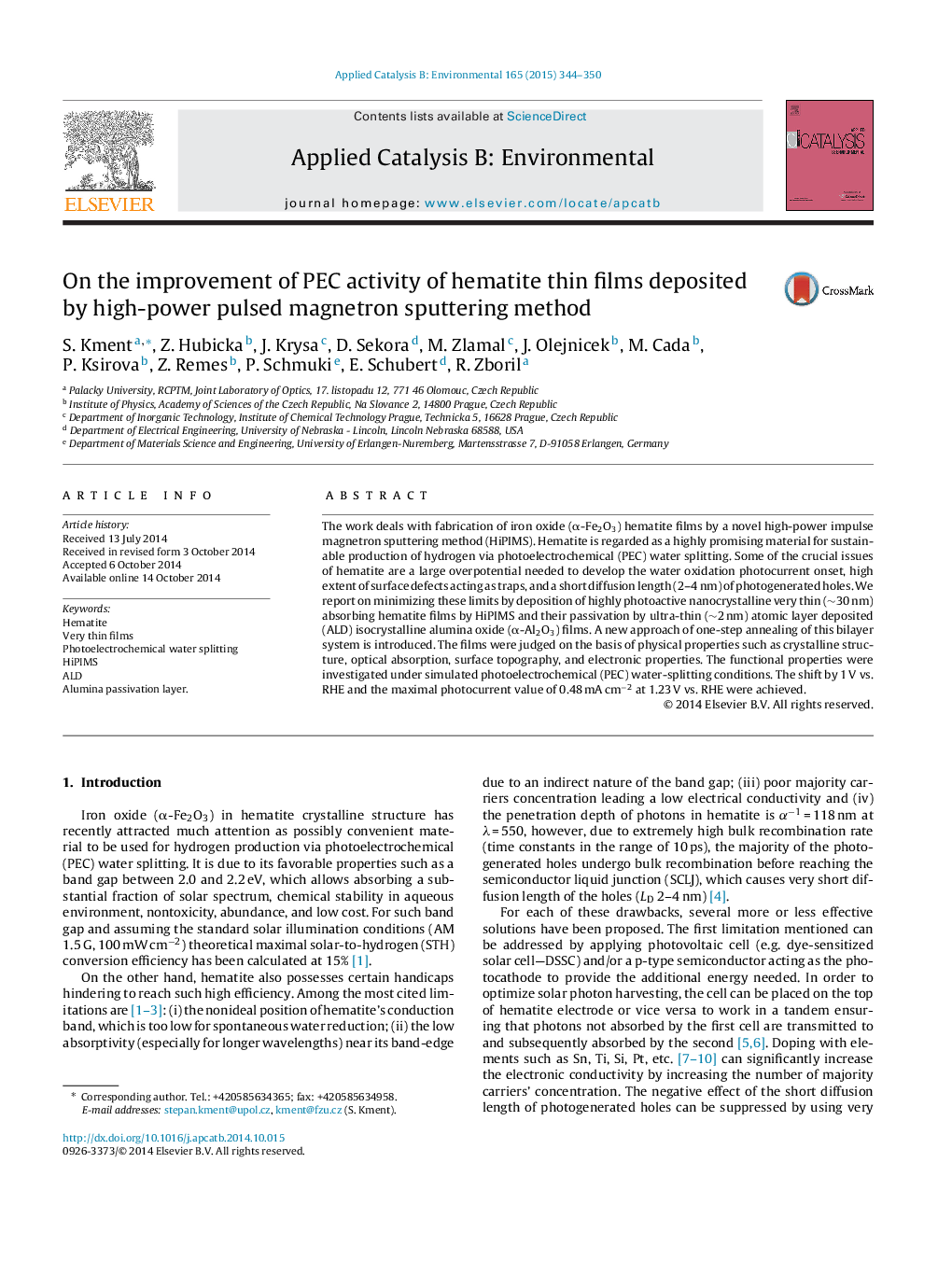| Article ID | Journal | Published Year | Pages | File Type |
|---|---|---|---|---|
| 45564 | Applied Catalysis B: Environmental | 2015 | 7 Pages |
•The hematite very thin (∼30 nm) films were fabricated by HiPIMS.•The efficient HiPIMS hematite/ALD alumina system was prepared by one-step annealing.•The photocurrent onset potential was shifted by 0.1 vs. RHE.•The highest photocurrent at 1.23 V vs. RHE achieved was 0.48 mA cm−2.
The work deals with fabrication of iron oxide (α-Fe2O3) hematite films by a novel high-power impulse magnetron sputtering method (HiPIMS). Hematite is regarded as a highly promising material for sustainable production of hydrogen via photoelectrochemical (PEC) water splitting. Some of the crucial issues of hematite are a large overpotential needed to develop the water oxidation photocurrent onset, high extent of surface defects acting as traps, and a short diffusion length (2–4 nm) of photogenerated holes. We report on minimizing these limits by deposition of highly photoactive nanocrystalline very thin (∼30 nm) absorbing hematite films by HiPIMS and their passivation by ultra-thin (∼2 nm) atomic layer deposited (ALD) isocrystalline alumina oxide (α-Al2O3) films. A new approach of one-step annealing of this bilayer system is introduced. The films were judged on the basis of physical properties such as crystalline structure, optical absorption, surface topography, and electronic properties. The functional properties were investigated under simulated photoelectrochemical (PEC) water-splitting conditions. The shift by 1 V vs. RHE and the maximal photocurrent value of 0.48 mA cm−2 at 1.23 V vs. RHE were achieved.
Graphical abstractFigure optionsDownload full-size imageDownload as PowerPoint slide
